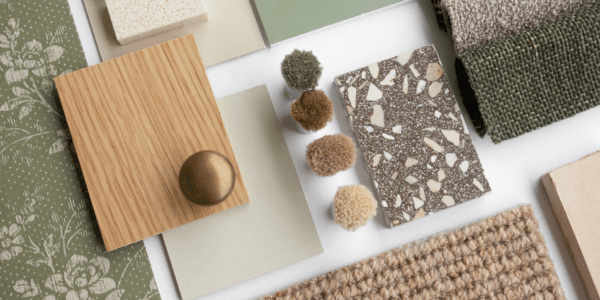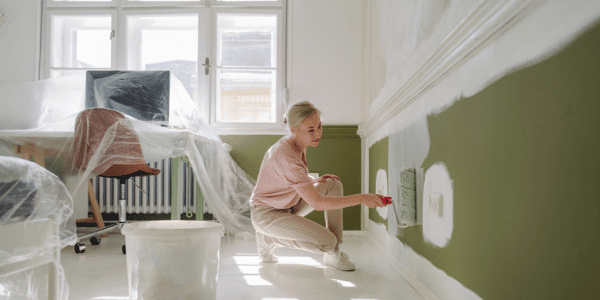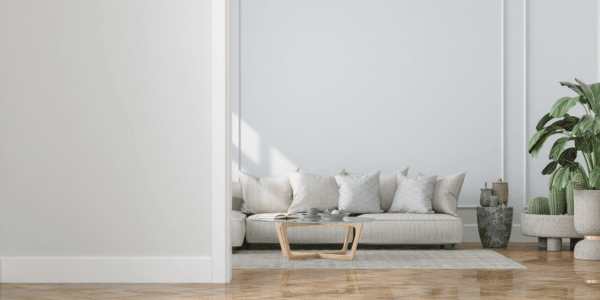Top Interior Design Mistakes People Make (& How to Fix Them)

We've all been there—Sundays spent scrolling through Pinterest, admiring dreamy interiors, only to glance around our own space with a touch of disappointment. Personalizing your home can feel like a high-stakes puzzle. We all want a space that looks snatched from a magazine spread and exudes comfort. But even the most well-intentioned, seasoned decorators can commit common interior design mistakes. The silver lining? Every corner can be transformed into a stylish haven with a few decorating do’s and don’ts.
Whether styling your first apartment or refreshing your forever home, here are the most common home decorating errors and interior design tips for beginners.
RELATED: Want to Increase Your Property Value? These Small Updates Will Make a Big Difference
1. Furniture Hugging the Walls
While it may seem like the easiest way to make a room look more open, lining furniture tightly against the walls is one of the most common interior design mistakes that gives an area a disconnected and cold feel. Instead, focus on function. Float furniture into zones or areas for conversation and gathering. Use rugs to define these areas without disrupting the space, harmonizing your décor (and guests) together.
2. Flat, One-Dimensional Lighting
A vibrant and dynamic lighting scheme is the unsung hero of a great design. Relying solely on overhead or ceiling lights can make a room appear sterile and flat. However, this rookie home décor mistake can be easily corrected by layering your lighting. Try combining a variety of illumination types, like:
- Ambient (overhead lights)
- Task (reading lamps)
- Accent (sconces and candles)
Mixing and matching lighting styles creates warmth and dimension. Bonus: Never underestimate the power of a well-placed floor lamp or dimmer switch to set a mood. Remember to keep the temperatures of your lighting scheme consistent for a cohesive atmosphere.

3. Choosing Your Paint First
Paint swatches are often the starting point for a major room renovation. But choosing your paint before anything else is like choosing icing before baking a cake. Here’s why:
- Limited flexibility: Selecting furnishings with hues that match pre-chosen paint colors can be tricky, restricting décor options.
- Lighting impact: Colors can appear drastically different under various lighting conditions, which you may overlook until after the room is complete.
- Design evolution: Your vision for the space may shift as you select different design elements.
Instead, start with key furnishings like a sofa, rug, curtains, or piece of art that speaks to you. Then, choose the paint color that best complements it. Pro tip: Avoid accent walls. Often, a room looks incomplete with just one decorated wall. Opt for a single bold color that covers each wall for a bespoke look that exudes confidence.
RELATED: Set a Tone: Mood-Boosting Paint Colors for Every Room
4. Artwork Hung Too High or Low
Once you’ve picked that perfect print or painting, ensure it’s not hung too high or too low. This can throw off the room's balance and make even the most beautiful piece an eyesore. It’s one of the most overlooked design details and easiest to fix. Aim to hang artwork at eye level, and make sure the bottom frame is roughly six to eight inches from the top of your furniture. For gallery walls, treat the entire arrangement as a single unit and center it.
RELATED: How to Create a Gallery Wall Like an Interior Designer
5. Too Much Matching
Matching furniture sets and color schemes can feel impersonal, like a showroom or catalog. Infuse some character into your space by mixing materials, textures, and styles. Try pairing a modern sofa with a vintage end table or combining metals and woods. The key is to keep it cohesive without going cookie-cutter.

6. Overdecorating (or Under-Decorating)
Too many accessories create clutter and can shrink the size of your room. And too few pieces gives the impression that the room is unfinished. A good rule of thumb? Stick to the “rule of three” when styling surfaces: Select a few well-chosen, intentional pieces like a plant, a lighting source, and a personal item. Varying heights and textures also go a long way, adding dimension and personality.
RELATED: 15 Eye-Catching Coffee Table Books
7. Ignoring Scale and Proportion
A small rug under a massive sectional or an oversized chandelier in a tiny room is a common misstep for beginners. Clashes with scale and proportions create an awkward and uncomfortable space. Before buying, map out the dimensions of your space with painter’s tape. Choose rugs that extend under all major furniture pieces. Vary the heights of décor so the area is more dynamic and eye-catching.
Design Smarter, Not Harder
Modern home styling isn’t about perfection; it’s about personalization. Designing with intention means creating a space that looks as good as it feels—and is a unique reflection of you. From functional furniture arrangements to brilliant lighting design, complementary paint schemes, and striking the perfect balance between positive and negative space, a few smart interior design tips can make your house a sanctuary.
Don’t stop at your front door! Your outdoor spaces deserve just as much love. Check out our related article, “5 Ways to Spruce Up Your Backyard on a Budget,” and bring that same savvy sophistication to your great outdoors.